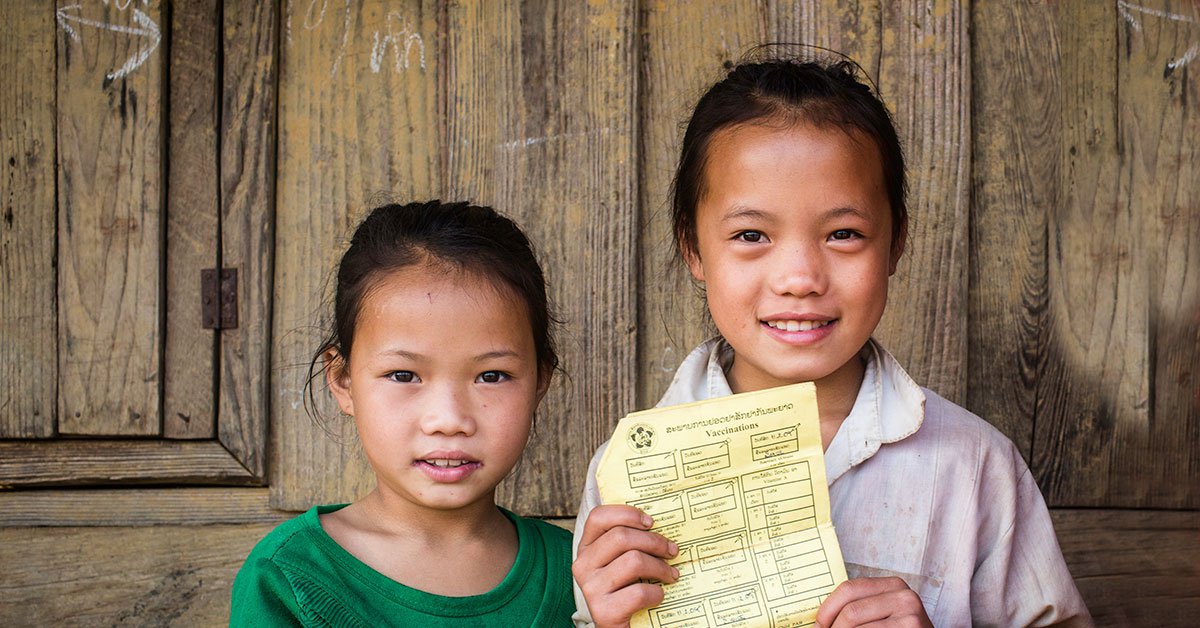From early-stage research and development to navigating regulatory hurdles and vaccine introduction policies, PATH’s Japanese encephalitis (JE) project was unique. It arose from an unanticipated need, faced unforeseen challenges, and developed several unexpected solutions.
In 2000, JE, a mosquito-borne viral infection of the brain, was relatively unknown as a global health issue. Unlike polio or measles, which are globally distributed, JE is a regionally endemic disease in Asia and parts of the Western Pacific. Although more than 3 billion people live in at-risk areas, many are unaware of JE because encephalitis can be caused by several different pathogens, JE diagnosis can be complex and expensive, and there is no specific treatment for JE. As a result, a specific JE diagnosis was rarely sought, disease surveillance was limited, and there were no large-scale JE interventions being implemented. JE was truly a neglected tropical disease.
Then, in 2003, after local public health officials in India raised concerns about JE to PATH staff, PATH got involved.
At the start of the project, safe and affordable JE vaccines were out of reach for most low- and lower-middle-income countries. Over the course of nearly 20 years of working on JE—along with lessons from other vaccine projects such as the Meningitis Vaccine Project¹—PATH and its partners developed a new and much needed approach to introducing a previously unavailable JE vaccine.
PATH’s JE vaccine project began with an end goal and worked backward, conducting end-to-end activities that spanned from improving the quality and production of the vaccine to conducting additional clinical trials to country-specific introduction activities.
It started with clear alignment and shared understanding of the need to save lives from JE, ended with sustainable country-led programs, and fostered comprehensive thinking by integrating diverse perspectives at all points along the way. It was unprecedented, and it worked. Through support from PATH and its partners, since 2003, ten countries have introduced a now more widely available JE vaccine. Over that time, more than 300 million children have been protected from the disease through vaccination.

Students in Myanmar show their vaccination cards during a JE campaign. Their marked fingers help health workers identify who's been vaccinated. Photo: PATH/Thet Htoo.
From the project’s start, the end goal was clear—save lives from JE now. Having a shared end goal allowed for flexibility and creativity when considering multiple solutions and approaches, including those that did not involve development of a new JE vaccine. If the project had solely focused on creating and developing a new JE vaccine, it would have missed an opportunity to save time and resources by scaling an existing, but largely unknown vaccine. It also would have missed an opportunity to support the development of a Chinese vaccine manufacturer as a producer of low-price, high-quality vaccines for public health application. Agreement on the end goal allowed acceptance of this alternative approach.
In addition, a clear and common end goal made it easier for diverse partners and stakeholders from across many technical areas to work together to solve a common problem. From the outset, the JE project team developed one comprehensive plan with several paths, all leading to decreased death and disability due to JE. These included but were not limited to:
- Elevating global, regional, and national awareness of JE and disseminating evidence through advocacy and communications.
- Supporting countries’ JE surveillance and diagnostics efforts.
- Ensuring safety and quality of a suitable vaccine through clinical trials and chemistry, manufacturing, and controls (CMC) activities.
- Supporting stable and predictable vaccine supply and demand through demand forecasting.
- Informing country decision-making with evidence from clinical trials and health economics.
- Supporting countries’ data-based decision-making, planning, and logistics for smooth and sustainable vaccine introduction.
- Coordinating global efforts by convening a global resource center for JE.
Because experts from many technical areas worked together, PATH’s JE team was able to make connections and identify gaps and opportunities that may have been missed if this work was done piecemeal. For example, if this project had narrowly focused on CMC without broader perspective or input from experts in vaccine introduction, we might have risked developing a JE vaccine with very little country demand because of a presentation incompatible with country delivery systems.
Similarly, countries preferred a vaccine that resulted in immunity for life after a single dose and could be obtained at an affordable price. PATH’s experts in health impact, new vaccine policy, health economics, financing, cold chain, and other key areas listened to experts in vaccine introduction regarding these country needs and made it happen together.
Over nearly 20 years, partnerships forged through efforts to introduce JE vaccines have resulted in more than 300 million children protected and stronger health systems across multiple countries.
Developing an end-to-end approach
Just as a clear end goal informed the JE project’s initial approach, the end results continue to inform other efforts at various points along the development-to-delivery spectrum. For example, early-adopter countries emphasized that a new vaccine must use the existing cold chain infrastructure, resources, and personnel from other vaccination programs in order to make a new introduction feasible, affordable, and sustainable. In this way, the JE project’s end goal also became a beginning, not only for other vaccine efforts that can learn from the JE experience, but also for country-owned vaccination program sustainability. It became a true end-to-end approach to vaccine introduction, with cycles of feedback, learning, and recalibrating from multiple points of view along the way.

A woman giving a young girl the JE vaccine in Nepal. Photo: PATH/Rocky Prajapati.
¹ For more information about the Meningitis Vaccine Project, please visit: https://www.path.org/articles/about-meningitis-vaccine-project/
